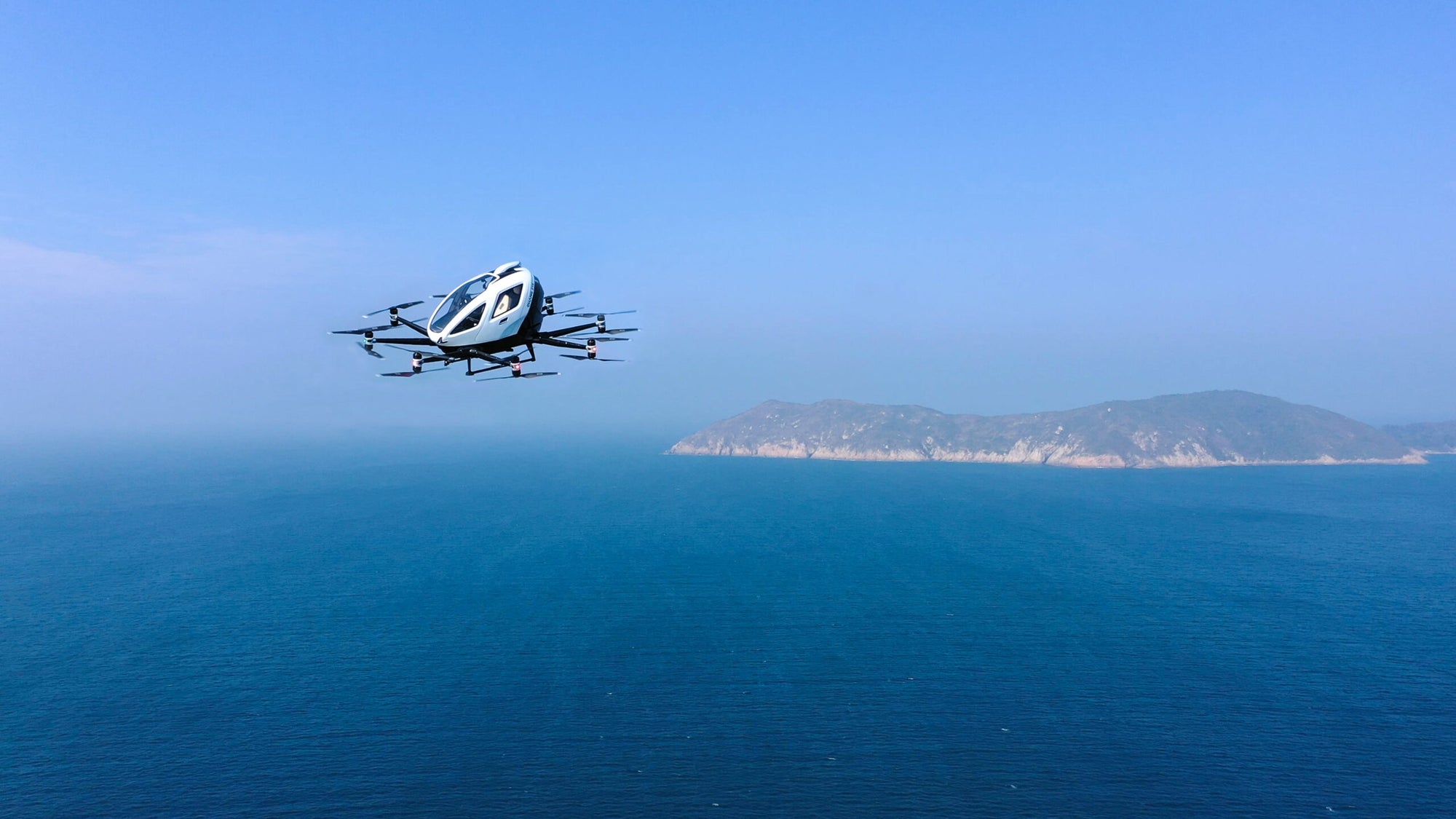EHang, manufacturer of the world’s first and only type-certified electric vertical takeoff and landing (eVTOL) air taxi, has formed a strategic partnership with the subsidiary of one of the world’s largest airlines.
The Chinese firm on Monday announced it signed a memorandum of understanding (MOU) with China Southern Airlines General Aviation (CSGAC), the GA subsidiary of China Southern Airlines, which in 2023 ranked as one of the 10 largest public airlines by revenue. EHang and CSGAC will focus mainly on flight operations, infrastructure support, demonstrations, and the development of new use cases for the former’s flagship EH216-S.
Since the aircraft is self-flying, the partners will not need to worry about pilot training, a common concern among U.S. manufacturers of piloted eVTOL models. Boeing air taxi subsidiary Wisk Aero is one of the few U.S. manufacturers seeking to fly autonomously at launch.
EHang’s model is intended to be a part of China’s low-altitude economy, an analog to the advanced air mobility (AAM) industry taking shape in the U.S. and abroad.
“CSGAC is actively exploring expansion into the emerging low-altitude industry,” said Erbao Li, chairman of CSGAC. “This cooperation will create innovative archetypes for the low-altitude economy, unlocking new growth opportunities for the general aviation industry and driving the high-quality advancement of the low-altitude economy industry chain in the Guangdong-Hong Kong-Macau Greater Bay Area.”
The companies intend to create demonstration sites at Zhuhai Jiuzhou Airport (ZGSD) and Zhuhai Chimelong Ocean Kingdom, a popular theme park, that will serve as hubs for aerial tourism in Zhuhai and the surrounding Greater Bay Area.
“As a frontrunner in the eVTOL industry, we believe that the safe operations of pilotless eVTOL aircraft is crucial to the industry’s development,” said Zhao Wang, chief operating officer of EHang. “Together with CSGAC, we will establish demonstration sites for pilotless eVTOL operations in the Greater Bay Area and spearhead safe, sustainable, and efficient low-altitude operations.”
The partners will also look at potential island-hopping use cases for the EH216-S, including cargo transport, emergency response, and medical evacuations. CSGAC will help train EHang operational personnel, build vertiport infrastructure, develop a platform for flight services, and define maintenance standards.
The two-passenger aircraft has a range of about 22 sm (19 nm) and cruises at about 80 mph (70 knots), making it smaller and less capable than most piloted eVTOL designs, such as Archer’s Midnight or Joby’s air taxi. While those companies are focused mainly on transportation to and from airports, EHang will prioritize out-and-back aerial sightseeing trips.
A wingless design, the EH216-S deploys a coaxial dual-propeller architecture, with eight foldable arms housing 16 lift-and-thrust rotors.
The Chinese manufacturer has received plenty of help, obtaining financial and regulatory support from local and regional governments, particularly those in the cities of Shenzhen, Guangzhou, and Hefei. Unlike the FAA or European Union Aviation Safety Agency (EASA), China’s Civil Aviation Authority (CAAC) wants to get autonomous aircraft in the skies first, perceiving them as safer than their crewed counterparts. EHang’s closest competitor is Autoflight, another manufacturer of self-flying eVTOL air taxis.
In addition to being the first to receive type certification, the EH216-S is also the first aircraft of its kind to be approved for airworthiness and mass production, which began in April. In February, the manufacturer revealed the price tag for the model: around $330,000, which, based on FLYING’s analysis, would make it one of the cheapest eVTOL air taxis on the market.

